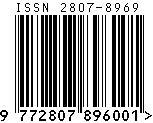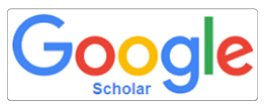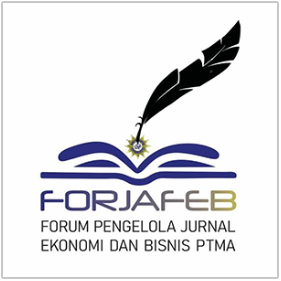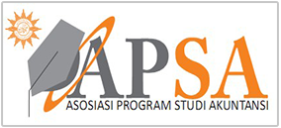Pengaruh Cyberloafing Terhadap Kinerja Karyawan Dengan Self Control Sebagai Variable Moderasi
DOI:
https://doi.org/10.30595/raar.v3i1.16939Keywords:
Cyberloafing, self-control, employee performanceAbstract
The term cyberloafing is used to describe the voluntary act of employees using their company's Internet access for non-work-related purposes during working hours. Some examples of cyberloafing behavior by employees are online shopping, browsing, browsing social media, looking for work, sending and receiving personal emails, and downloading files that are not related to work. Cyberloafing has a significant positive effect on employee performance at the Surakarta State Property and Auction Service Office, so it can be concluded that the higher the level of cyberloafing carried out by employees, the better the employee performance, and conversely the lower the level of cyberloafing carried out by employees, the employee's performance will decrease. Self control moderates the relationship between cyberloafing on the performance of employees of the Surakarta State Wealth Service Office and Auction, with a significant negative effect, so it can be concluded that the higher the level of cyberloafing carried out by employees will reduce employee self control thereby reducing employee performance, and vice versa, the lower the level of cyberloafing carried out by employees will increase self-control so that employee performance will also increase.
References
Al-Shuaibi, A. S. I., Subramaniam, C., & Faridahwati, M. S. (2014). The Mediating Influence of Job Satisfaction on the Relationship between HR Practices and Cyberdeviance. Journal of Marketing and Management.
Askew. K. L. (2012). The Relationship Between Cyberloafing and Task Performance and an Examination of the Theory of Planned Behavior as a Model of Cyberloafing. Theses and Dissertations. University of South Florida.
Azizah, S. N. (2017). Analysis of factors affecting the implementation of computer-based accounting information system on small and medium enterprises. Jurnal Ekonomi & Studi Pembangunan, 18(2), 111-115.
Belanger, F. & C. V. Slyke. (2002). Abuse or learning? Communication of the ACM.
Blanchard, A. L., & C. A. Henle. (2008). The interaction of Work Stressor and
Organizational sanctions on Cyberloafing. Journal of Managerial Issues.
Celik, N. (2014). Job Satisfaction’s Impact on Cyberloafing; An University Example.
International Academic Conference.
Ghasemi, E. H., & M. Hasanzadeh. (2013). Surveying the Relative Importance of Job Satisfaction Dimensions on Counter-productive and Withdrawal Behaviors Case Study: Parsian Bank’s Employees. International Journal of Management and Social Sciences Research (IJMSSR).
Ghozali, I. (2009). Aplikasi Analisis Multivariate Dengan Program SPSS. Cetakan
IV. Semarang : BP Universitas Diponegoro.
Greenfield, P. M. (2009). Technology and informal education: What is taught, and what is learned. Science Journal.
Heryanto, J. (2004). Pro dan Kontra Ekonomi Global. Jurnal Manajemen & Kewirausahaan.
Jogiyanto, H. (2013). Metodologi Penelitian Bisnis Salah Kaprah dan Pengalaman- Pengalaman. Edisi ke enam. Penerbit BPFE, Yogyakarta.
Kartika, E. W., & T. S. Kaihatu. (2010). Analisis Pengaruh Motivasi Kerja
Terhadap Kepuasan Kerja (Studi Kasus pada Karyawan Restoran di Pakuwon
Food Festival Surabaya). Jurnal Manajemen dan Kewirausahaan.
Kay., Bart., Y. Johnson., A. Chern., & A. H. Kangas. (2009). Cyberloafing; A Modern Workplace Phenomenon, diakses dari http://www.alanchern.com/documents/Loafing pada tanggal 27 September
2014.
Khoiroh, M. M. (2012). Tingkat Worker Turnover pada Multinational Companies dan Kaitannya dengan Cultural Adjustment. Jurnal Ekonomi dan Studi Pembangunan.
Leon, M. C. D., & M. A. Finkelstein. (2011). Individualism/collectivism and organizational citizenship behavior. Psichotema.
Li, S. & Chung, T. (2006). Internet function and Internet addictive behavior.
Computers in Human Behavior.
Liberman, B., G. Seidman., K. Y. A. McKenna., L. E. Buffardi. (2011). Employee Job Attitudes and Organizational Characteristics as Predictors of Cyberloafing. Computers in Human Behavior.
Lim, V. K. G. (2002). The IT way of loafing on the job: cyberloafing, neutralizing and organizational justice. Journal of Organizational Behaviour.
Lim, V. K. G., & Chen, D. J. Q. (2009). Impact of Cyberloafing on Affect, Work depletion, Facilitation and Engagement. Conference Paper SIOP.
Lim, V. K. G., & R. Rajah. (2011). Cyberloafing, Neutralization, And Organizational
Citizenship Behavior. PACIS Proceedings.
Lim, V. K. G., & Teo, T. S. H. (2005) . Prevalence, perceived seriousness, justification and regulation of cyberloafing in Singapore – an exploratory study. Journal Information and Management.
Margaretha, M., & A. P. Anugrah. (2013). Regulasi Diri Mempengaruhi Perilaku Cyberloafing yang Dimoderasi Oleh Berbagai Karakteristik Individual Mahasiswa Universitas Kristen Maranatha. Proceeding Seminar Nasional. Fakultas Ekonomi. Universitas Kristen Maranatha Bandung.
Margaretha, M., & Y. A. Prasetio. (2012). Pengaruh Servant Leadership, Organizational Citizenship Behavior, Kecocokan Orang-Organisasi Serta Identifikasi Organisasi Studi Pada Organisasi Kemahasiswaan Di Lingkungan Universitas Kristen Maranatha. Proceeding Seminar Nasional Fakultas Ekonomi. Universitas Kristen Maranatha Bandung.
Mastrangelo, P. M., W. Everton., & J. A. Jolton. (2006). Personal use of work computers: Distraction versus destruction. CyberPsychology & Behavior.
Mohammad, J., F. Q. Habib., & M. A. Alias. (2011). Job Satisfaction and Organizational Citizenship Behavior: An Empirical Study At Higher Learning Institutions. Asian Academy of Management Journal.
Ozler, D. E., & Polat. (2012). Cyberloafing Phenomenon in Organizations: Determinants and Impacts. Journal of eBusiness and eGovernment Studies.
Ramayah, T. (2010). Personal web usage and work inefficiency. Business Strategy
Series.
Robbins., S. P., & T. A. Judge. (2012). Perilaku Organisasi. Edisi ke dua belas, Penerbit Salemba Empat, Jakarta.
Soegihartono, A. (2012). Pengaruh Kepemimpinan dan Kepuasan Kerja Terhadap Kinerja dengan Mediasi Komitmen (di PT Alam Kayu Sakti Semarang). Jurnal Mitra Ekonomi dan Manajemen Bisnis.
Spector, P. E., & Fox, S. (2010). Theorizing about the deviant citizen: An attributional explanation of the interplay of organizational citizenship and counterproductive work behavior. Human Resource Management Review.
Suliyanto. (2009). Metode Riset Bisnis. Penerbit ANDI, Yogyakarta.
Sunjoyo., R. Setiawan., V. Carolina., N. Magdalena., & A. Kurniawan. (2013).Aplikasi SPSS untuk Smart Riset. Penerbit ALFABETA, Bandung.
Ugrin, J. C., & J. M. Pearson. (2013). The effects of sanctions and stigmas on cyberloafing. Computers in Human Behavior Journal.
Young, K. S. (2010). Policies and procedures to manage employee Internet abuse.
Computers in Human Behaviour Journal.
Young, K. S., & C. J. Case. (2004). Internet Abuse in The Workplace: New Trends
In Risk Management. Paper published in CyberPsychology and Behavior. Zhang, D. (2011). Organizational Citizenship Behavior. White Paper.
Zhang, Y. (2004). Age, gender, and Internet attitudes among employees in the business world. Computers in Human Behaviour Journal.
Downloads
Published
Issue
Section
License
Authors who publish with this journal agree to the following terms:
Authors retain copyright and grant the journal right of first publication with the work simultaneously licensed under a Creative Commons Attribution License that allows others to share the work with an acknowledgement of the work's authorship and initial publication in this journal.
Authors are able to enter into separate, additional contractual arrangements for the non-exclusive distribution of the journal's published version of the work (e.g., post it to an institutional repository or publish it in a book), with an acknowledgement of its initial publication in this journal.
Authors are permitted and encouraged to post their work online (e.g., in institutional repositories or on their website) prior to and during the submission process, as it can lead to productive exchanges, as well as earlier and greater citation of published work (See The Effect of Open Access).

RAAR: Review of Applied Accounting Research is licensed under a Creative Commons Attribution 4.0 International License.




















